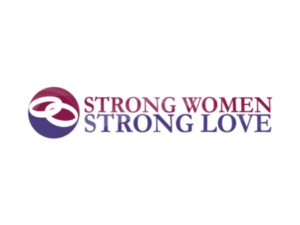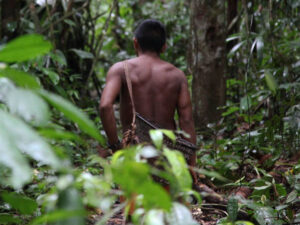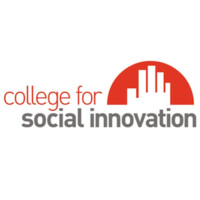FIGURE80 is an advisory firm that helps early-stage companies build distinctive strategies and governance structures to attract investors. They work directly with seed to Series C companies and support investors to monitor and strengthen the performance of their portfolio companies.
Sam Parker of FIGURE80 spoke with Divya Manocha on February 8, 2024. Click here to read the full conversation with insights highlighted.
Divya Manocha: Could you please introduce yourself, describe the problem that you and FIGURE80 are addressing, and how you’re responding to it?
Sam Parker: My name’s Sam Parker, and I’m co-founder of FIGURE80. The challenge that it was set up to solve is the high percentage of failures in startups — both for-profit and nonprofit startups. One of the major reasons for that high degree of failure is that startups build good governance too late. It’s a topic which entrepreneurs and business founders do not consider sufficiently during the early years even though many of the challenges that early-stage organizations face can be traced to a lack of governance. There is not very much support, guidance tools, or resources for early stage organizations to even understand what governance is at that stage or what is necessary to build now versus what to build later.
FIGURE80 was set up to provide those solutions to early-stage companies, not-for-profits, and their investors. We found that there is a big misalignment between the investors and early stage organizations. Investors and funders were exasperated by the lack of governance structures, meanwhile, early-stage organizations were generally not interested or motivated to build that early on.
Divya Manocha: What makes your approach distinctive from other advisory firms?
Sam Parker: Our focus is on early-stage. If you look at the market, there is plenty of advice, guidance, and manuals for more established late-stage organizations. We’re focused on the early-stage because that’s where there is the highest degree of failure and greatest gap in the social entrepreneur world. That’s also a stage where the entrepreneur is challenged by time constraints, cash constraints, and only a certain amount of brain space. Most of that is dedicated to thinking about survival: payroll, marketing, fundraising and so on. There’s not really much thinking around the long-term scaffolding for the organization, which is how I would describe governance.
We also take a new approach in defining governance. Most people we interviewed understood governance as simply accountability, reporting, and bureaucracy, whereas, we’ve redefined it as something that is much more value adding.
It consists of three main things: how you make decisions, how you get the best out of the people around you that help you make those decisions, and the risk management and compliance piece. What people normally think of when you mention governance is the third piece. We’ve redefined it to make it much more relevant to investability and performance.
Divya Manocha: Does your approach vary from client to client?
Sam Parker: The majority of the clients we work with are social enterprises, but we also work for not-for-profits. When it comes to how you make decisions and how you’re getting the right people around the table to help you make decisions and the compliance and risk management, many of the fundamental principles of governance are the same. Obviously we tailor for the needs of each company depending on their stage.
For example, some companies don’t even have a board, so we tailor the questions and approaches to make it more or less detailed on the governance side for early stage companies. Organizations at the seed stage or the pre-seed stage are really only looking at what we would call decision-making groups — a pre-board type of organization and are perfectly valid as a form of governance.
They’re still making decisions, trying to make good decisions, and making sure they have the best people around. Early on, it’s much more about decision-making than it is about compliance because they haven’t really established much risk or created much of a profile yet, so the risk levels are much lower. Components of governance change over time. We find that clients get more engaged and enthusiastic when they see it as a way of becoming more investible.
Divya Manocha: Can you give a brief example of the impact of your work?
Sam Parker: There’s a particular social enterprise that works in water and sanitation that was expanding into new countries and had quite a complex governance scenario where they had an established board that hadn’t evolved with the organization. There was a lack of clarity around what was needed to grow and sustain that growth. The company was growing healthily, but its governance hadn’t caught up nor looked at whether it was managing risks correctly across the organization from a reputation and compliance point of view.
We have a structured process called the SAGES Assessment. SAGES stands for Smart and Agile Governance for Early Success. We take a number of people in the organization through the same questions, which we feed into a model that tests about a hundred different characteristics of good governance. It provides a score and measurements on how the organization is doing against those various components of good governance. We then go through an interview process where we validate the results with the CEO, the Board, and senior managers. We test what seems to be bubbling up as the key issues and key material gaps around their governances for performance. Then, we narrow down from about thirty potential actions that could be taken to about five.
We come up with a list of about five main things the organization should do to quickly get results around performance. Clearly there’s more potential things that could be done, but the secret was helping them get down to what was most impactful to do. This organization ended up making decisions around how they were structured, how they were allocating responsibilities, how to utilize the skills in their organization, how they related with the country offices from their head offices, and how they decided where to grow and expand their business.
We did that over a period of six weeks with a combination of online questions and analysis on our side as well as feedback, coaching and discussions with the organization. We also do periodic coaching support for implementation, which is important because even when you’ve figured out the actions necessary to improve performance, you still have to take them; there will inevitably be bumps along the road. At the request of the client, we add on mentoring and coaching to help them through their action plan.
Divya Manocha: Is the implementation part worked on by you in terms of mentoring and coaching?
Sam Parker: There’s an automated part of it, which is where the client gets a quick report back of their overall score against different components of good governance and where the hotspots are for potential action. It’s like going to a doctor for a health check. You see where the different issues are and figure out what to do with them. As an organization that does this all the time, we’re able to provide advice on how to do that work and what resources can be used to address things. That’s how the interaction and support really bears fruit. Coaching really brings it alive.
Having a roadmap is fine, but our view is that it needs to be combined with one-to-one coaching to see what it actually means: how to implement, who will do that, how to fund it, and who needs to buy-in on what you’re trying to do.
If you’re talking about reformulating the way you’re governed, that can be tricky because you’ve got various interests involved at the board and senior management level. You get into the heart of the power of who and how decisions are made. You need to do that very sensitively and respect where people are at; just sending someone a report and wiping your hands of it won’t work particularly well.
Divya Manocha: How do you measure your success and what is the evidence that you have that you’ve made progress as an organization?
Sam Parker: We rely on feedback from the clients on how our support has impacted their business. For example, we would expect there to be improvements in those top five action areas, and those five things will have measurable indicators.
If they were working on strengthening skills through a skills matrix, we see if that’s been done and whether that additional expertise is making a difference. If there was a lack of clarity on areas of responsibilities, we see if there’s now documentation and get feedback from the team on whether they are clearer on their roles.
Sometimes there are boilerplate policies that young organizations don’t have — like code of ethics, related party transactions, or conflicts of interest policies — that can be seen as high risks by investors or funders if something went wrong. We look at whether it’s now in place and if staff has been trained on that material. Risk levels significantly drop as a result of those measures being put into place. For example, financial transactions have to have proper delegations of authority outlined very clearly. We’ve seen examples where funds have not been applied properly which ends up destroying the relationships between investors and organizations. They have to understand what these things mean for them on a day-to-day.
That feedback from staff on those sorts of things are very measurable. Then, the nice thing about the SAGES tool is that it’s something that can be run on an annual basis, so that you can track your metrics and improvements in terms of percentages against various criterias. .
Divya Manocha: What insight or teachable lessons can be taken from your work that others could use?
Sam Parker: It’s important to understand the reality of the life of a social entrepreneur — having to solve a thousand problems everyday and be bombarded from every direction with things to do — and the limitations of being cash, time, and resource strapped. Attention spans can be very short.
If you’re wanting to provide a resource to a particular sector, you need to tailor it to the specific needs of your audience, in this case, very busy people. That’s number one. Things need to be rapidly and easily accessible. It also needs to be clearly linked to performance and investability.
You also really need buy-in. With buy-in from the social entrepreneur on this type of support, then you can really make progress. They have to recognize the value and how it’s going to make the organization perform better to attract more investment. If it’s seen as something imposed or forced, it’s not going to make any difference at all. You also need to deeply understand your clients so that you understand what is most appropriate for their stage of evolution.
If you just throw some protocols and manuals at people, even if they’re interesting and valid, if they are not really speaking to the needs of the social entrepreneurs, it’ll just be another thing that ends up on the shelf. Tailoring it to their world is very important. Light touch and practicalities are absolutely vital.
Make things engaging and simple. Prioritize the top things as opposed to throwing long lists at people. The life of an entrepreneur is exhausting, so give them things that are actionable. If you can do that, you’re going to provide much more useful sector tools.
Divya Manocha: Social innovators tend to learn as much from things that don’t work as things that do, could you share a lesson from something that you’ve tried and didn’t work as you thought it would?
Sam Parker: Something that hasn’t worked has been bringing people together in large numbers. We’ve had some quite successful masterclasses where we’ve gone through the basics, but the idea of bringing entrepreneurs together and inviting them to request more of it — in the sense that they’re part of a large community of startups that want to learn what they’re doing in terms in a particular topic — hasn’t had a lot of takeup. I think that’s because most startups feel like their situations are quite unique.
There’s this sense that if you can give someone a tool to self-assess themselves first and get some insights about how they can improve their own business, that is a more powerful way of getting them engaged in improving their business in this area.
It’s about providing immediate benefit to a company. For example, we set up a free startup self-assessment on our website. Anyone can go in and have a 10-minute online questionnaire with some immediate automated feedback to show where they sit on the spectrum of governance and what kind of category or archetype of governance they have. We also include tips for them to consider. That seems to be more successful than convening large groups. We find people don’t necessarily open up in large groups. They’re more willing to talk in smaller groups — three to five organizations. Then, they really share, listen, and learn from each other.
Divya Manocha: Are there any challenges you have faced in the past or that you’re currently facing that you haven’t been able to overcome or solve?
Sam Parker: Currently, we’re building up a track record of working with social entrepreneurs. Right now, we have 25-30 that we’re working with and about 150 have done the online self-assessment. We’re relatively young as an organization, so we can’t point to 10 years of working with 500 companies. We believe that’s fine, and we will continue to work with companies one-on-one or via their fund managers.
The real route to scale is to build a platform which would make this kind of content and guidance available to anyone who is looking to build an organization and looking for immediate feedback on what they can be focusing on. That seems to be the most logical way of scaling up.
We’ve gotten good feedback and high degrees of engagement amongst companies we’ve worked with, but we’re only ever going to be able to support tens of companies at a time. If you think about how many social entrepreneurs there are in the world, that’s not going to have a big impact globally. We’re not really going to build an ecosystem. We’ll have great boutique services to those that can have the resources, bandwidth and support, but we’re not going to reach thousands of organizations.
That’s where putting these tools on a platform in a very user-friendly and interactive way is something we would love to do. We’d love to find a foundation or grant provided that’s interested in potentially open-sourcing this. We think that’s a huge opportunity. It would be a relatively modest investment in technology that can be made available to hundreds of thousands of people.
Divya Manocha: Would consider yourself as an organization that’s working towards advancing systems level change?
Sam Parker: If this sort of resource was available to social entrepreneurs globally, anyone could do a self-assessment and hone in on the top five things they can fix right now to help them move to the next stage of their company. They could do that regularly. That would strengthen the startup ecosystem, which is our main goal in making these kinds of resources, knowledge, and insights available to the whole market, to the whole world.
Divya Manocha: What do you think is most needed from other actors or partners to advance systems level change?
Sam Parker: Investors have a huge role to play. We did a big market landscaping when we started and found that quite a high number of startup organizations felt that they weren’t getting enough support from their investors or funders on these sort of topics because they might have a very inspiring vision for what they want to achieve, but very few leaders are knowledgeable or experienced in what governance means at the early stage. So if you’re a funder or investor, providing this kind of guidance more strongly and thoroughly to their portfolio organizations would be necessary.
As for other systems actors, it would be the regulators, local legislators, and local governments who are in the position to really enable those companies to thrive and grow. If they really want social impact to happen, they need to think about what enabling conditions they need to create.
For example, if you’re a health social entrepreneur, there are a lot of licenses and permits necessary to operate. There are ways regulators can make it easier to scale up the impact. That speaks to the importance of compliance and risk management for an organization. To be compliant, you need to have a license to operate as well as conform to local regulations and laws. There are also employment processes that need to be in place for grievances and whistleblowing. Local government and local regulators have a lot of influence on that.
Divya Manocha: What do the next five years look like for you as of now?
Sam Parker: I think continuing to get a better understanding on how to provide this kind of insight to social entrepreneurs worldwide. We’d like to be the Myers-Briggs of startup governance, so there’s a lot of work around refining that: making sure the questions are the right one, feeding that into the model, and making the analysis even more accurate and easier to read. There’s a lot of basic product development that’s important.
We’d like to have these tools embedded within established protocols. There’s a lot of good methodologies established for E & S of ESGs [Environmental, Social, and Governance] measures, but not a lot for G. We’d also like to be an established go-to partner for investors and funders around the world interested in strengthening their organizations or portfolios by routinely and efficiently measuring and improving governance over time. By linking governance to performance, it can really add value to their work.
Click here to read the full conversation with insights highlighted.
Divya Manocha has been a LEDE Fellow with the Solutions Journalism Network and is the founder of SoJourn, a bootcamp that brings together university students from around the world to produce solutions journalism. SoJourn has led to the publication of several stories which now feature on the Solutions Story Tracker alongside the work of Pulitzer Prize-winning journalists. Divya’s current work focuses on making assistive technology more accessible and using the power of play to drive civic engagement.
* This interview has been edited and condensed.
Learn about what’s working in social innovation.







